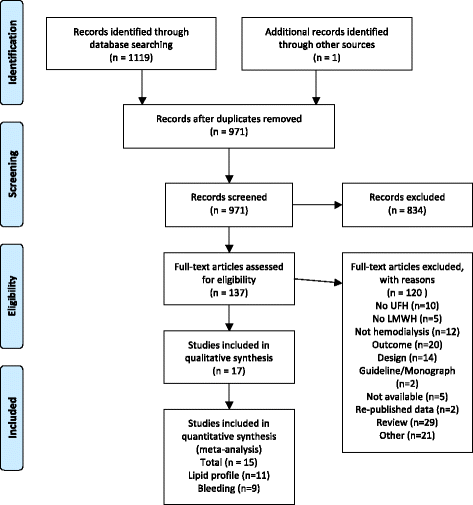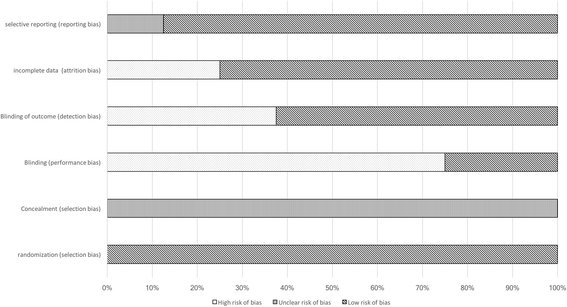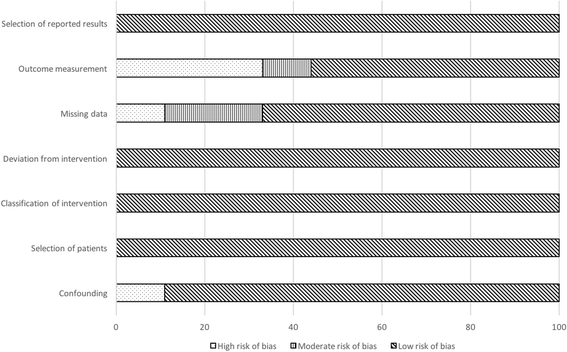Safety of low-molecular-weight heparin compared to unfractionated heparin in hemodialysis: a systematic review and meta-analysis
- PMID: 28592259
- PMCID: PMC5463373
- DOI: 10.1186/s12882-017-0596-4
Safety of low-molecular-weight heparin compared to unfractionated heparin in hemodialysis: a systematic review and meta-analysis
Abstract
Background: Low molecular weight heparins (LMWH) have been extensively studied and became the treatment of choice for several indications including pulmonary embolism. While their efficacy in hemodialysis is considered similar to unfractionated heparin (UFH), their safety remains controversial mainly due to a risk of bioaccumulation in patients with renal impairment. The aim of this systematic review was to evaluate the safety of LMWH when compared to UFH for extracorporeal circuit (ECC) anticoagulation.
Methods: We used Pubmed, Embase, Cochrane central register of controlled trials, Trip database and NICE to retrieve relevant studies with no language restriction. We looked for controlled experimental trials comparing LMWH to UFH for ECC anticoagulation among end-stage renal disease patients undergoing chronic hemodialysis. Studies were kept if they reported at least one of the following outcomes: bleeding, lipid profile, cardiovascular events, osteoporosis or heparin-induced thrombocytopenia. Two independent reviewers conducted studies selection, quality assessment and data extraction with discrepancies solved by a third reviewer. Relative risk and 95% CI was calculated for dichotomous outcomes and mean weighted difference (MWD) with 95% CI was used to pool continuous variables.
Results: Seventeen studies were selected as part of the systematic. The relative risk for total bleeding was 0.76 (95% CI 0.26-2.22). The WMD calculated for total cholesterol was -28.70 mg/dl (95% CI -51.43 to -5.98), a WMD for triglycerides of -55.57 mg/dl (95% CI -94.49 to -16.66) was estimated, and finally LDL-cholesterol had a WMD of -14.88 mg/dl (95% CI -36.27 to 6.51).
Conclusions: LMWH showed to be at least as safe as UFH for ECC anticoagulation in chronic hemodialysis. The limited number of studies reporting on osteoporosis and HIT does not allow any conclusion for these outcomes. Larger studies are needed to evaluate properly the safety of LMWH in chronic hemodialysis.
Keywords: Bleeding; Chronic renal dialysis; Low molecular weight heparin; Meta-analysis; Systematic review; Unfractionated heparin.
Figures




References
-
- Kearon C, Akl EA, Comerota AJ, Prandoni P, Bounameaux H, Goldhaber SZ, et al. Antithrombotic therapy for VTE disease: Antithrombotic Therapy and Prevention of Thrombosis, 9th ed: American College of Chest Physicians Evidence-Based Clinical Practice Guidelines. Chest. 2012;141(2 Suppl):e419S–e494S. doi: 10.1378/chest.11-2301. - DOI - PMC - PubMed
-
- Gould MK, Dembitzer AD, Doyle RL, Hastie TJ, Garber AM. Low-molecular-weight heparins compared with unfractionated heparin for treatment of acute deep venous thrombosis. A meta-analysis of randomized, controlled trials. Ann Intern Med. 1999;130(10):800–809. doi: 10.7326/0003-4819-130-10-199905180-00003. - DOI - PubMed
-
- Section V. Chronic intermittent haemodialysis and prevention of clotting in the extracorporal system. Nephrol Dial Transplant. 2002;17(Suppl 7):63–71. - PubMed
Publication types
MeSH terms
Substances
LinkOut - more resources
Full Text Sources
Other Literature Sources
Medical

